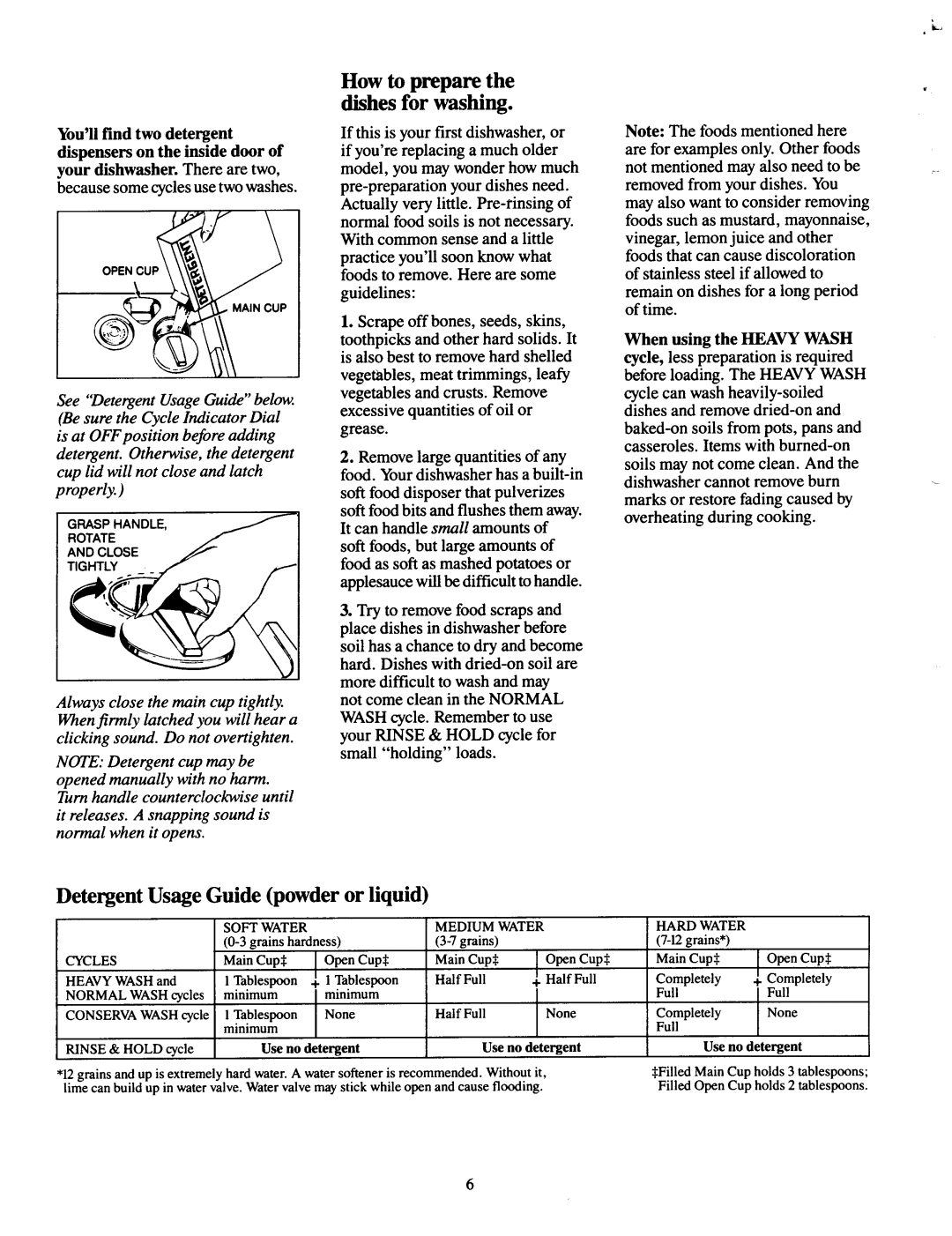DU460, DU466 specifications
The Jenn-Air DU466 and DU460 are exceptional built-in dishwasher models designed for those seeking performance and elegance in their kitchen appliances. Both models exhibit premium features that enhance efficiency, usability, and style, making them a standout choice for modern households.One of the primary features of the Jenn-Air DU466 and DU460 is their advanced cleaning technology. These dishwashers utilize a three-stage filtration system, ensuring food particles are effectively eliminated, leading to impeccably clean dishes after every cycle. The innovative Precision Dry™ system minimizes the need for towel drying, providing superior drying results thanks to its uniquely designed vents and enhanced airflow.
Both models offer a generous capacity, accommodating up to 15 place settings. The interior is designed with adjustable racks, which can be configured to fit a variety of dish sizes, from tall pots to delicate wine glasses. This flexibility allows homeowners to maximize their loading efficiency, while the sleek stainless steel finish effortlessly blends into any kitchen décor.
Energy efficiency is another hallmark of the Jenn-Air DU466 and DU460. They are ENERGY STAR® certified, reflecting their commitment to environmental sustainability while saving users on energy and water costs. These models are designed to use less water during each cycle without compromising cleaning power, making them an eco-friendly choice for conscientious consumers.
Moreover, the dishwashers include a quiet operation feature, achieving sound levels as low as 44 dBA. This ensures that the dishwashers can run during dinner parties or late-night gatherings without disturbing conversations or relaxation time. The luxurious Quiet Partner™ sound insulation system reinforces this quiet performance, making it ideal for open-concept homes.
The intuitive control panel features a sleek touch interface that simplifies operation. Users can easily select from multiple wash cycles, including a powerful Heavy Wash option for stubborn stains and a Quick Wash cycle for lighter loads. The delay start feature allows users to program the dishwasher to begin at a more convenient time, adding to its convenience.
In conclusion, the Jenn-Air DU466 and DU460 embody a winning combination of style, functionality, and performance. With their advanced cleaning technologies, energy efficiency, and user-friendly features, these dishwashers cater to the modern homeowner's needs, making them a worthy investment for any kitchen.

